Headline News Archive
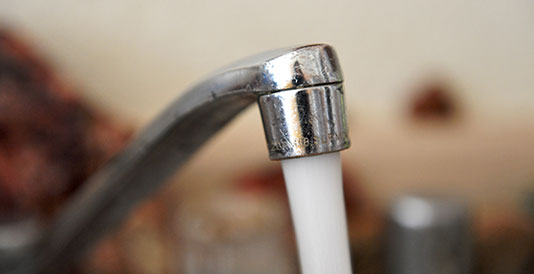 May 31, 2017 (Source: FIU) - Florida leads the south in water efficiency, according to a study examining water use across the United States. While states in the north have become more water efficient, their southern counterparts have not. Florida is the exception with water use in homes, business and public spaces declining over the past 30 years in the Sunshine State. Broward and Palm Beach were the most efficient counties, while Hardee and DeSoto were the least efficient. These findings are consistent with the national findings that show increased water efficiency in urban areas while rural areas have become less efficient. "Florida is the third most populous state in the country and it is largely urban, which accounts for its higher water efficiency compared to other southern states," said FIU biologist John Kominoski, a co-author of the study.
May 31, 2017 (Source: FIU) - Florida leads the south in water efficiency, according to a study examining water use across the United States. While states in the north have become more water efficient, their southern counterparts have not. Florida is the exception with water use in homes, business and public spaces declining over the past 30 years in the Sunshine State. Broward and Palm Beach were the most efficient counties, while Hardee and DeSoto were the least efficient. These findings are consistent with the national findings that show increased water efficiency in urban areas while rural areas have become less efficient. "Florida is the third most populous state in the country and it is largely urban, which accounts for its higher water efficiency compared to other southern states," said FIU biologist John Kominoski, a co-author of the study.
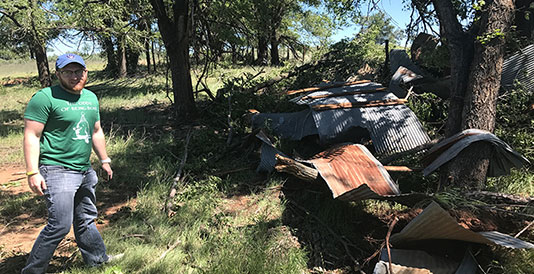 May 24, 2017 (Source: FSU) - New research out of Florida State University shows that the strength of a tornado has a significantly larger effect than population on the number of casualties. “It’s somewhat surprising because we’re led to believe it’s just a problem with exposure — the more people in the way the more casualties,” said James Elsner, chair of the FSU Department of Geography and Earl & Sofia Shaw Professor. That’s not the case, according to this latest study. Using a regression model, researchers found that on average a doubling of the population under the path of a tornado leads to a 21 percent increase in the casualty rate, while a doubling of the energy dispersed by the tornado leads to a 33 percent increase in the casualty rate.
May 24, 2017 (Source: FSU) - New research out of Florida State University shows that the strength of a tornado has a significantly larger effect than population on the number of casualties. “It’s somewhat surprising because we’re led to believe it’s just a problem with exposure — the more people in the way the more casualties,” said James Elsner, chair of the FSU Department of Geography and Earl & Sofia Shaw Professor. That’s not the case, according to this latest study. Using a regression model, researchers found that on average a doubling of the population under the path of a tornado leads to a 21 percent increase in the casualty rate, while a doubling of the energy dispersed by the tornado leads to a 33 percent increase in the casualty rate.
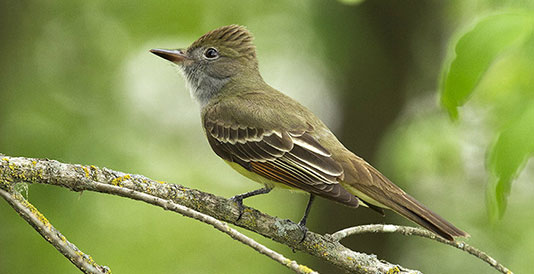 May 15, 2017 (Source: UF) - Climate change is altering the delicate seasonal clock that North American migratory songbirds rely on to successfully mate and raise healthy offspring, setting in motion a domino effect that could threaten the survival of many familiar backyard bird species, new research shows. A growing shift in the onset of spring has left nine of 48 species of songbirds studied unable to reach their northern breeding grounds at the calendar marks critical for producing the next generation of fledglings, according to a paper published today in Scientific Reports.
May 15, 2017 (Source: UF) - Climate change is altering the delicate seasonal clock that North American migratory songbirds rely on to successfully mate and raise healthy offspring, setting in motion a domino effect that could threaten the survival of many familiar backyard bird species, new research shows. A growing shift in the onset of spring has left nine of 48 species of songbirds studied unable to reach their northern breeding grounds at the calendar marks critical for producing the next generation of fledglings, according to a paper published today in Scientific Reports.
“It’s like ‘Silent Spring,’ but with a more elusive culprit,” said Stephen Mayor, a postdoctoral researcher with the Florida Museum of Natural History at the University of Florida and first author of the study. “We’re seeing spring-like conditions well before birds arrive. The growing mismatch means fewer birds are likely to survive, reproduce and return the following year. These are birds people are used to seeing and hearing in their backyards. They’re part of the American landscape, part of our psyche. To imagine a future where they’re much less common would be a real loss.”
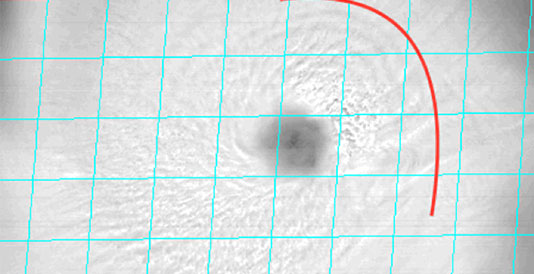 May 15, 2017 (Source: UM RSMAS) - Researchers believe they have found a new way to monitor the intensity and location of hurricanes from hundreds of miles away by detecting atmospheric waves radiating from the centers of these powerful storms.
May 15, 2017 (Source: UM RSMAS) - Researchers believe they have found a new way to monitor the intensity and location of hurricanes from hundreds of miles away by detecting atmospheric waves radiating from the centers of these powerful storms.
In a new study, scientists from the University of Miami (UM) Rosenstiel School of Marine and Atmospheric Science and the Hurricane Research Division of the National Oceanic and Atmospheric Administration (NOAA) presented direct observations of the waves, obtained by NOAA aircraft flying in hurricanes and by a research buoy located in the Pacific Ocean. The waves, known as atmospheric gravity waves, are produced by strong thunderstorms near the eye and radiate outward in expanding spirals.
“These very subtle waves can sometimes be seen in satellite images,” said David Nolan, professor in the Department of Atmospheric Sciences, and lead author of the study. “We were able to measure them in aircraft data and surface instruments.”
 May 10, 2017 (Source: UF) - New research co-authored by USF's Jeremy Cohen, Leah Johnson, and Jason Rohr and UF's Sadie Ryan and Cat Lippi sheds light on the climate suitability for Aedes aegypti and Aedes albopictus mosquitos and transmission rates of Zika, chikungunya, and dengue fever.
May 10, 2017 (Source: UF) - New research co-authored by USF's Jeremy Cohen, Leah Johnson, and Jason Rohr and UF's Sadie Ryan and Cat Lippi sheds light on the climate suitability for Aedes aegypti and Aedes albopictus mosquitos and transmission rates of Zika, chikungunya, and dengue fever.
The study, published in PLOS Neglected Tropical Diseases compares new data driven models of Zika, chikungunya, and dengue fever transmission to real world measurements of human infections caused by bites from Aedes aegypti and Ae. Albopictus mosquitoes. These models confirm that temperature is the single most important factor for predicting the rate and geographic spread of epidemics of these mosquito-borne diseases. Temperature influences transmissibility in many ways – affecting the lifespan of an individual mosquito, and determining biting frequency and the reproductive rate of the virus within the mosquito.
The collaborative research team includes experts in epidemiology, public health, ecology, mathematical modeling, and geography, and was funded by a grant from the National Science Foundation’s Ecology and Evolution of Infectious Disease program (NSF-DEB 1518681).
PLOS Neglected Tropical Diseases Journal Article
Image: Aedes control – image courtesy Mr. Dany Krom
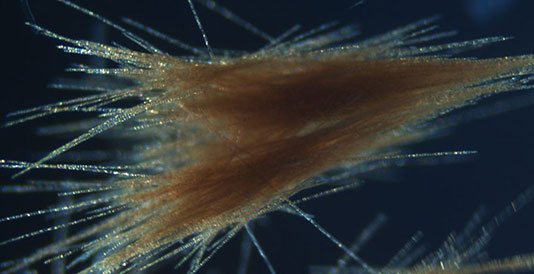 May 3, 2017 (Source: FSU) - Climate change may be putting cyanobacteria that are crucial to the functioning of the ocean at risk as the amount of carbon dioxide in the atmosphere increases and the acidity of ocean water changes. In a paper published in Science, a team of researchers from Florida State University, Xiamen University in China and Princeton University argue that the acidification of seawater caused by rising carbon dioxide levels makes it difficult for a type of cyanobacteria to perform a process called nitrogen fixation. Few people know much about a type of cyanobacteria called Trichodesmium, but this miniscule collection of cells is critical to the health of hundreds of species in the Earth’s oceans. Through nitrogen fixation, Trichodesmium converts nitrogen gas into ammonia and other molecules that organisms are dependent on for survival. Trichodesmium is thought to be responsible for about 50 percent of marine nitrogen fixation, so a decline in its ability could have a major ripple effect on marine ecosystems. “This is one of the major sources of nitrogen for other organisms in the open ocean,” said Sven Kranz, assistant professor of Earth, Ocean and Atmospheric Science at Florida State University and a co-author of this study. “If Trichodesmium responds negatively to the environmental changes forced upon the ocean by fossil fuel burning, it could have a large effect on our food web.”
May 3, 2017 (Source: FSU) - Climate change may be putting cyanobacteria that are crucial to the functioning of the ocean at risk as the amount of carbon dioxide in the atmosphere increases and the acidity of ocean water changes. In a paper published in Science, a team of researchers from Florida State University, Xiamen University in China and Princeton University argue that the acidification of seawater caused by rising carbon dioxide levels makes it difficult for a type of cyanobacteria to perform a process called nitrogen fixation. Few people know much about a type of cyanobacteria called Trichodesmium, but this miniscule collection of cells is critical to the health of hundreds of species in the Earth’s oceans. Through nitrogen fixation, Trichodesmium converts nitrogen gas into ammonia and other molecules that organisms are dependent on for survival. Trichodesmium is thought to be responsible for about 50 percent of marine nitrogen fixation, so a decline in its ability could have a major ripple effect on marine ecosystems. “This is one of the major sources of nitrogen for other organisms in the open ocean,” said Sven Kranz, assistant professor of Earth, Ocean and Atmospheric Science at Florida State University and a co-author of this study. “If Trichodesmium responds negatively to the environmental changes forced upon the ocean by fossil fuel burning, it could have a large effect on our food web.”
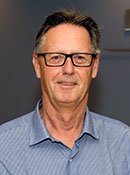 April 27, 2017 - Anton Post, Ph.D. has been appointed as the executive director of FAU Harbor Branch, leading Environmental and Ocean Science research at FAU. Post will focus on a new strategic effort to develop interdisciplinary research combining expertise across many FAU centers and colleges including: FAU Harbor Branch; Institute for Sensing and Embedded Network Systems Engineering (I-SENSE); SeaTech: Institute for Ocean and Systems Engineering; Florida Center for Environmental Studies; Charles E. Schmidt College of Science and the College of Engineering and Computer Science.
April 27, 2017 - Anton Post, Ph.D. has been appointed as the executive director of FAU Harbor Branch, leading Environmental and Ocean Science research at FAU. Post will focus on a new strategic effort to develop interdisciplinary research combining expertise across many FAU centers and colleges including: FAU Harbor Branch; Institute for Sensing and Embedded Network Systems Engineering (I-SENSE); SeaTech: Institute for Ocean and Systems Engineering; Florida Center for Environmental Studies; Charles E. Schmidt College of Science and the College of Engineering and Computer Science.
The world renowned oceanographer and leading phytoplankton researcher previously served as the executive director of the University of Rhode Island's Coastal Resources Center, Graduate School of Oceanography. FAU is in its fifth decade of working with marine science and technology partners on applied projects that produce positive environmental, societal and economic outcomes.
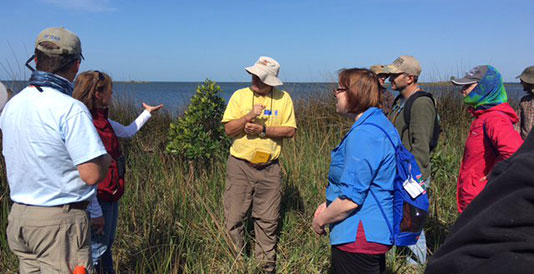 April 26, 2017 - The first Florida Climate Institute Field Course was held this spring and hosted by the University of Florida. The course, titled Sea Level Rise and Coastal Ecology: Science, Policy, and Practice, was formed in order to provide opportunities for graduate students to practice collaborating across disciplines to solve complex natural resource problems. There were five interdisciplinary groups that consisted of three students from distinct programs of study: one student from the Levin College of Law, one student from the College of Agriculture and Life Sciences, and one student from the College of Liberal Arts and Sciences. Each group was assigned a case study of local relevance to natural resources in the Big Bend region. Each natural resource case study was associated with problems presented by sea-level rise and climate change in the region.
April 26, 2017 - The first Florida Climate Institute Field Course was held this spring and hosted by the University of Florida. The course, titled Sea Level Rise and Coastal Ecology: Science, Policy, and Practice, was formed in order to provide opportunities for graduate students to practice collaborating across disciplines to solve complex natural resource problems. There were five interdisciplinary groups that consisted of three students from distinct programs of study: one student from the Levin College of Law, one student from the College of Agriculture and Life Sciences, and one student from the College of Liberal Arts and Sciences. Each group was assigned a case study of local relevance to natural resources in the Big Bend region. Each natural resource case study was associated with problems presented by sea-level rise and climate change in the region.
To view a video about the course, please visit https://youtu.be/IPTyZIrwhUw.
For more information and to download course materials, please visit https://floridaclimateinstitute.org/projects/2017-field-course.
 April 24, 2017 - The South Florida Regional Planning Council (SFRPC) and Keren Bolter are pleased to announce the following project updates:
April 24, 2017 - The South Florida Regional Planning Council (SFRPC) and Keren Bolter are pleased to announce the following project updates:
An Actionable Tool to Map Future Expansion of the Coastal High Hazard Area: Translating Science to Policy in Planning for Sea-Level Rise and Storm Surge in the Florida Keys with a focus on Islamorada, Village of Islands
SFRPC was awarded a grant from the Gulf of Mexico Alliance to create an interactive tool to map surge vulnerability. This study will focus on the Florida Keys’ exposure to sea-level rise, and more importantly, storm surge, using recently released Sea, Lake, and Overland Surges from Hurricane (SLOSH) data modeled at various scenarios. Results will be made available on an interactive website, and there will be a series of stakeholder engagement opportunities.
Trainers and Tools: Building Coastal Flood Hazard Resiliency in Florida’s Regional Planning Council Communities Project: Capacity Building through Technical Assistance and Outreach
This project was created to educate and promote four coastal flood hazard assessment tools: NOAA’s Sea Level Rise Viewer, Coastal Flood Exposure Mapper, and CanVis Tools, as well as FDOT/UF’s Geoplan Sketch Planning Tool. The project was coordinated with regional trainings and vulnerability assessments conducted throughout Florida’s ten regional planning councils. Outcomes included enhanced communication, stakeholder engagement, intergovernmental coordination, and an overall increase in Florida’s adaptive capacity for coastal resilience. For more information, please visit the project webpage.
Improving the Planning Process to Protect Infrastructure from Emerging Coastal Flood Hazards
In producing a series of Infrastructure Protection Resources, SFRPC aimed to provide technical assistance to local governments wishing to increase resilience to coastal flooding, particularly during extreme events such as high tides and storm surge. In the first part of the project, SFRPC documented the process of in situ measurement and modeling of current and projected Fall King Tide flooding in six pilot communities: Dania Beach, Hollywood, North Miami, North Bay Village, Key Largo, and Islamorada. The second set of resources documented structure surveys given to local public works staff, city managers, and other relevant stakeholders, to understand the current state of infrastructure in 6 pilot communities, as well as key challenges and solutions. The final resource, set for completion in June 2017, focuses on one community, North Bay Village. The SFRPC and Village staff plan to prepare and transmit a comprehensive plan amendment(s) which address deficiencies in the Village’s response to Peril of Flood. This amendment will include best available data, including new storm surge data from the Sea, Lake, and Overland Surges from Hurricanes (SLOSH) model to designate the Coastal High Hazard Area. For more information, please visit the project webpage.
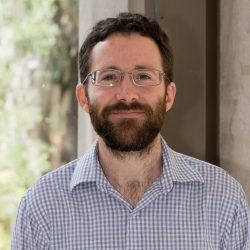 April 24, 2017 (Source: CLASS Fund) - The California Landscape Architectural Student Scholarship Fund (CLASS Fund) Selection Committee is pleased to announce that the 2016-17 CLASS Fund Grant Award goes to Professor Michael Volk and his research team for a project entitled, Incorporating Climate Change into Landscape Architectural Projects and Practice.
April 24, 2017 (Source: CLASS Fund) - The California Landscape Architectural Student Scholarship Fund (CLASS Fund) Selection Committee is pleased to announce that the 2016-17 CLASS Fund Grant Award goes to Professor Michael Volk and his research team for a project entitled, Incorporating Climate Change into Landscape Architectural Projects and Practice.
Professor Volk from the Department of Landscape Architecture at University of Florida will lead an interdisciplinary research team to examine Landscape Architects’ roles in mitigating climate change impacts and alternative design and implementation practices in the state of Florida. Using data from a recent survey on attitudes and perceptions of Florida landscape architects toward climate change, Professor Volk’s study will identify information gaps and possible barriers to adoption of landscape design practices that anticipate and plan for climate change, as well as potential strategies that can be used to mitigate and adapt to the impacts of climate change on the built and natural environment.
Professor Michael Volk commented that, “landscape architects have a significant role in addressing climate change in their work and practice, and many landscape architects are already doing so. We greatly appreciate the support of the CLASS Fund and CELA in this project, and look forward to continuing our work to advance knowledge in this area.”
Other members on the research team include: Professor Gail Hansen, Department of Environmental Horticulture, University of Florida, and Belinda Nettles, PhD Candidate, Center for Landscape Conservation Planning & Levin College of Law Conservation Clinic, University of Florida.
 April 11, 2017 - U.S. Sen. Bill Nelson (D-Fla.), the ranking member of Senate Committee on Commerce, Science, and Transportation convened a full committee field hearing titled “Extreme Weather and Coastal Flooding: What is Happening Now, What is the Future Risk, and What Can We Do About It?”on Monday, April 10, 2017 at 1:30 p.m. EDT in West Palm Beach, Florida.
April 11, 2017 - U.S. Sen. Bill Nelson (D-Fla.), the ranking member of Senate Committee on Commerce, Science, and Transportation convened a full committee field hearing titled “Extreme Weather and Coastal Flooding: What is Happening Now, What is the Future Risk, and What Can We Do About It?”on Monday, April 10, 2017 at 1:30 p.m. EDT in West Palm Beach, Florida.
The hearing examined the impacts of sea level rise and extreme weather events. Since 2006, sea level rise in southeast Florida has tripled, averaging about nine millimeters a year. The resulting impacts of coastal flooding, saltwater intrusion, storm surge, and land erosion on Florida’s coastal communities have prompted local governments to act. Following Hurricane Sandy, Palm Beach County restored over 20 acres of beach and sand-dunes to protect shoreside communities from flooding and severe weather. Sen. Nelson led a discussion on the economic impacts of extreme weather and coastal flooding to communities, as well as future risks and efforts to address the problems.
The field hearing included 2 witnesses from the Florida Climate Institute: Dr. Ben Kirtman (UM) and Dr. Len Berry (Coastal Risk Consulting; FAU). The full witness testimonies are available at the hearing webpage link below.
Witnesses:
- *Dr. Ben Kirtman, PhD, Director of the Cooperative Institute for Marine and Atmospheric Sciences; and Director of the Center for Computational Science, Climate, and Environmental Hazards at the University of Miami
- *Dr. Leonard “Len” Berry, PhD, Emeritus Professor of Geosciences at Florida Atlantic University; and Vice President of Government Programs at Coastal Risk Consulting, LLC
- Mr. Carl G. Hedde, CPCU, Senior Vice President; and Head of Risk Accumulation and Munich Reinsurance Company of America
- Dr. Jennifer Jurado, PhD, Chief Resiliency Officer; and Director of Environmental Planning and Community Resilience at Broward County
*FCI Researcher
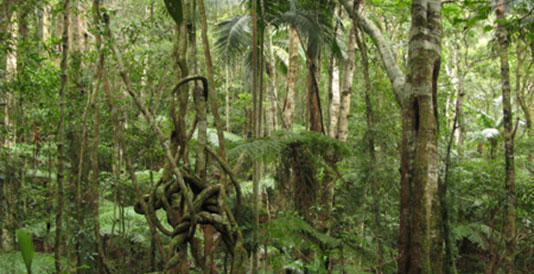 April 10, 2017 (Source: Brett Scheffers) - Dispersal has become one of the most studied traits in ecology and conservation as scientists attempt to understand species distributions and species resilience to environmental instability. A paper led by Brett Scheffers (UF) and recently published in Global Ecology and Biogeography presents a new trait associated with resilience to environment instability—arboreality.
April 10, 2017 (Source: Brett Scheffers) - Dispersal has become one of the most studied traits in ecology and conservation as scientists attempt to understand species distributions and species resilience to environmental instability. A paper led by Brett Scheffers (UF) and recently published in Global Ecology and Biogeography presents a new trait associated with resilience to environment instability—arboreality.
Here, the authors show that vertical (arboreality) and horizontal (dispersal) movement are closely linked and together they increase the resilience of vertebrates to climatic instability in the wet tropical rainforests of Australia.
The authors also present a new climate dimension to biogeography—the microclimate created by trees. Here, they monitored temperature from ground to canopy in tropical rainforests across elevation. They show that low- and high-altitude arboreal species experience similar thermal regimes, whereas low- and high-altitude ground-dwelling species experience little overlap in thermal regimes.
Following the spirit of Janzen’s hypothesis (1967-Mountain passes are higher in the tropics), the researchers found that temperature regimes in canopies are effectively less differentiated across geographical space than on the ground due to greater overlap in hot thermal regimes in the canopy. As such, arboreality (and its strong interaction with horizontal dispersal) may be a critical trait mediating the extinction proneness of species to past and future environmental instability.
 April 5, 2017 (Source: FSU) - Jeffrey Chanton, an acclaimed climate scientist who has also done extensive work investigating the effects of the BP oil spill, has been named the 2017-2018 Robert O. Lawton Distinguished Professor, the highest honor given by the Florida State University faculty to one of its own.
April 5, 2017 (Source: FSU) - Jeffrey Chanton, an acclaimed climate scientist who has also done extensive work investigating the effects of the BP oil spill, has been named the 2017-2018 Robert O. Lawton Distinguished Professor, the highest honor given by the Florida State University faculty to one of its own.
“Jeff is a tremendous researcher and an asset to the Florida State University faculty,” said FSU President John Thrasher. “In addition to an impressive research record, Jeff is an outstanding colleague to his fellow faculty members and mentor to his students. The faculty has made an excellent choice in naming Jeff this year’s Lawton Distinguished Professor.”
Chanton is the John Widmer Winchester Professor of Oceanography in the Department of Earth, Ocean and Atmospheric Science, which is part of the College of Arts and Sciences. He is a 29-year veteran of the university and a fellow of the American Geophysical Union.
 April 5, 2017 - Changes in the distribution of land, marine and freshwater species as a result of climate change are affecting human wellbeing around the world, posing new health risks, economics threats and conflicts over resources. The study, by an international team, including Brett Scheffers (UF), is published in the journal Science. In response to climate change, land-based species are moving towards the poles by 17 kilometres per decade, and marine species by 72 kilometres per decade, on average.
April 5, 2017 - Changes in the distribution of land, marine and freshwater species as a result of climate change are affecting human wellbeing around the world, posing new health risks, economics threats and conflicts over resources. The study, by an international team, including Brett Scheffers (UF), is published in the journal Science. In response to climate change, land-based species are moving towards the poles by 17 kilometres per decade, and marine species by 72 kilometres per decade, on average.
The Science article was the result of the international Species on the Move conference co-organized by Scheffers and held in Hobart, Tasmania, in February 2016. The conference brought together approximately 350 international scientists to discuss the global redistribution of species due to climate change.
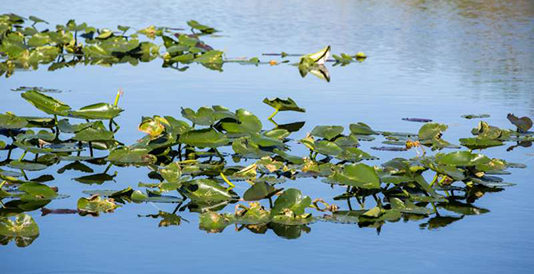 March 30, 2017 (Source: FIU) - The carbon dioxide coming from some of Earth’s tiniest residents may not be increasing as quickly as some believed in the face of global climate change. Streams and rivers are home to insects, bacteria and fungi that consume plant litter, including fallen leaves, and break it into smaller pieces. This type of litter is good for streams and rivers because it helps remove toxins. As leaf litter is consumed, insects and microbes get oxygen, convert nutrients into energy and release carbon dioxide into the atmosphere. This process is what scientists call leaf litter decay.
March 30, 2017 (Source: FIU) - The carbon dioxide coming from some of Earth’s tiniest residents may not be increasing as quickly as some believed in the face of global climate change. Streams and rivers are home to insects, bacteria and fungi that consume plant litter, including fallen leaves, and break it into smaller pieces. This type of litter is good for streams and rivers because it helps remove toxins. As leaf litter is consumed, insects and microbes get oxygen, convert nutrients into energy and release carbon dioxide into the atmosphere. This process is what scientists call leaf litter decay.
According to a recently released study, temperature is not the only factor in how quickly insects and micro-organisms convert their food into energy and, as a byproduct, release carbon dioxide into the air. This finding contradicts a long-held belief that this process would accelerate with rising temperatures. Understanding how plant matter breaks down in different environments can help scientists predict how ecosystems will respond to climate change.
“If you have a reliable source of energy for organisms in an ecosystem, like the energy provided by consuming leaf litter, the communities of animals and plants living there will be more persistent,” said John Kominoski, an FIU biologist and co-author of the study. “Since global temperatures are rising and leaf litter decay is not as sensitive to temperature as once believed, it gives us hope ecosystems won’t be as energy-limited as we had thought.”
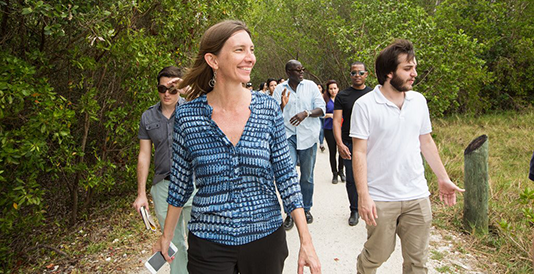 March 28, 2017 - The National Academies of Sciences, Engineering, and Medicine has appointed a committee of experts, including Tiffany Troxler of FIU, to conduct a study on Developing a Research Agenda on Carbon Dioxide Removal and Reliable Sequestration.
March 28, 2017 - The National Academies of Sciences, Engineering, and Medicine has appointed a committee of experts, including Tiffany Troxler of FIU, to conduct a study on Developing a Research Agenda on Carbon Dioxide Removal and Reliable Sequestration.
Reaching lower global temperature targets recently set by the international community to avoid climate risks may require removing greenhouse gas that's already accumulated. However, many of the proposed carbon dioxide removal (CDR) technologies are not yet viable in terms of cost and scalability, and any potential risks are not fully understood.
This study will develop the detailed research and development agenda needed to assess the benefits, risks, and sustainable scale potential for CDR and sequestration approaches and increase their commercial viability. Approaches considered will include land management, accelerated weathering, bioenergy with capture, direct air capture, geologic sequestration, and blue carbon, among others.
The committee slate is provisional pending a public comment period and final approval by the National Academies.
 March 1, 2017 - The Florida Climate Institute is pleased to welcome Nova Southeastern University (NSU) in Fort Lauderdale, FL, as our 10th member university. The NSU FCI branch will be directed by Dr. Bernard Riegl of the Halmos College of Natural Sciences and Oceanography, Department of Marine and Environmental Sciences, and Dr. Thomas Wuerzer of the Huizenga College of Business and Entrepreneurship.
March 1, 2017 - The Florida Climate Institute is pleased to welcome Nova Southeastern University (NSU) in Fort Lauderdale, FL, as our 10th member university. The NSU FCI branch will be directed by Dr. Bernard Riegl of the Halmos College of Natural Sciences and Oceanography, Department of Marine and Environmental Sciences, and Dr. Thomas Wuerzer of the Huizenga College of Business and Entrepreneurship.
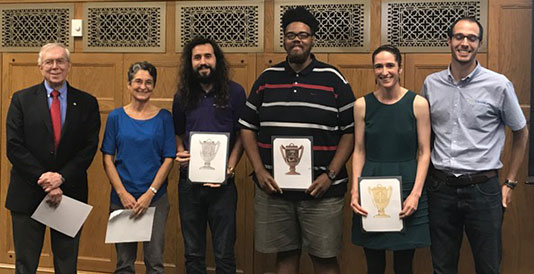 March 1, 2017 (Source: UF) - The Florida Climate Institute at the University of Florida hosted a 3-Minute Thesis/2-Minute Video Competition on February 28 in which graduate students presented their climate-related research. The event included students from several disciplines who all needed to use one slide to create a compelling story about the importance of their research for a lay audience.
March 1, 2017 (Source: UF) - The Florida Climate Institute at the University of Florida hosted a 3-Minute Thesis/2-Minute Video Competition on February 28 in which graduate students presented their climate-related research. The event included students from several disciplines who all needed to use one slide to create a compelling story about the importance of their research for a lay audience.
The winners of the 3mt/2mv contest were:
3MT:
1st place-- Sinead Crotty, PhD student for Synergistic interaction between sea-level rise and predator depletion drives regional salt marsh loss
2nd place--Jose Rafael Guarin. PhD student for Validating the NWheat crop model with historical extreme events
3rd place--Elliott White Jr. for Quantifying the impacts of chronic, low-level salinity on bald cypress swamps along the northern Gulf of Mexico
2MV:
Eduardo Montiero Gelcer for Climate smart agriculture: a tool to monitor crop development and weather to reduce risks in the southeast USA
Watch the presentations here.
Photo (left to right): Jim Jones, Ellen Martin, Jose Guarin, Elliott White Jr., Sinead Crotty, Eduardo Gelcer
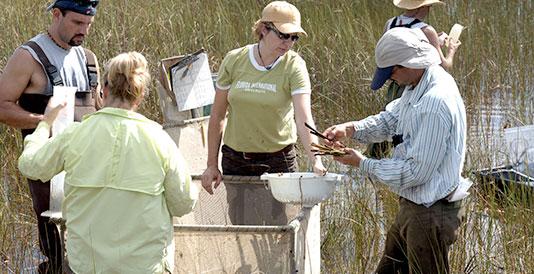 February 22, 2017 (Source: FIU) - Researchers are taking a step back to answer the question whether long-term studies are helping save plants, animals and the places they call home. The global answer is yes. FIU researchers are gathering data in the Florida Everglades that provide critical information needed for restoration and conservation. They’ve been doing this for more than a decade.
February 22, 2017 (Source: FIU) - Researchers are taking a step back to answer the question whether long-term studies are helping save plants, animals and the places they call home. The global answer is yes. FIU researchers are gathering data in the Florida Everglades that provide critical information needed for restoration and conservation. They’ve been doing this for more than a decade.
The Everglades is made up of different ecosystems, including swamps, hardwood hammocks, mangrove forests, pine rocklands and sawgrass marshes. Their interconnectivity makes them especially susceptible to changes in the environment.
FIU’s long-term approach to studying the Everglades allows scientists to understand how it works, and it allows them to predict how it will respond to changes in the future. For more than 16 years, scientists in FIU’s Florida Coastal Everglades Long Term Ecological Research (FCE LTER) Program have been studying how water, climate and people affect the Everglades. Their efforts have resulted in more than 500 peer-reviewed journal articles to date.
In a new paper, FIU researchers outline the value of international long-term research, how it has played into what is known about the Everglades and other wetlands, and how it can help solve current and future ecological problems. It is part of a four-paper special feature on international long term ecological research published in Ecosphere.











